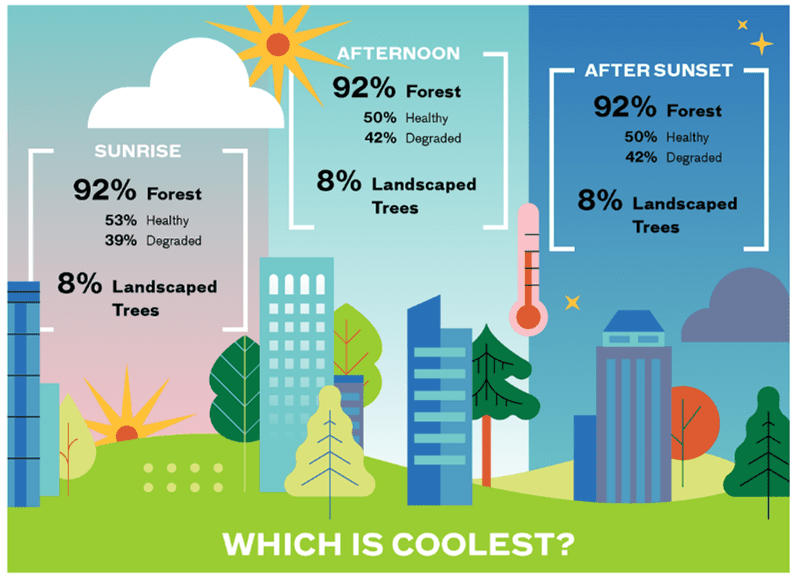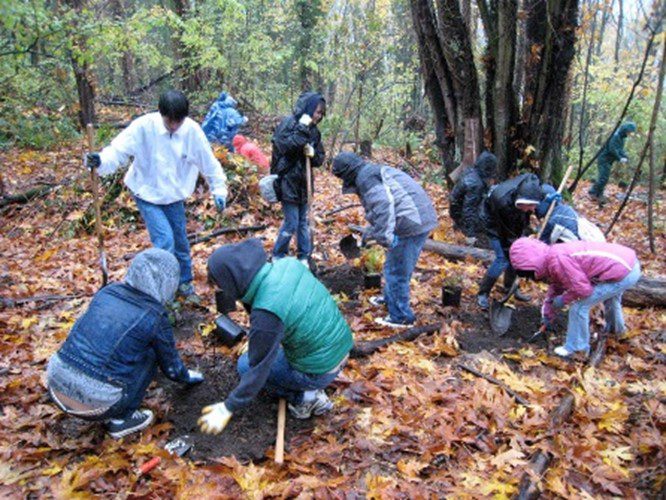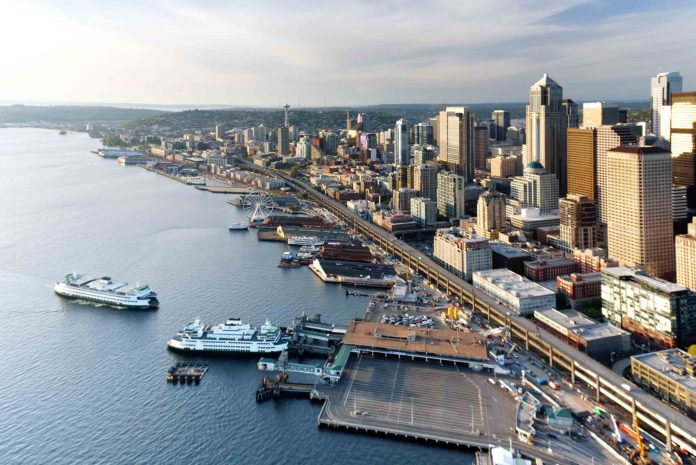In 2022 Seattle broke its historical record for most 90-degree days in a year. Then, as early as mid-May of this year, millions of people were placed under heat advisories as a heat wave brought record-breaking temperatures to parts of the Northwest. Summers of sizzling heat remind us that our neighborhoods are not getting any cooler. Sometimes, we can feel wedged between localized urban heat islands, prolonged droughts, smoke season and extreme heat events.
Yet forested natural areas provide a nature-based solution.

In Summer 2022, Seattle Parks and Recreation partnered with 12 other cities in a nationwide study led by New York City-based Natural Areas Conservancy. As part of our Forest in Cities collaboration, the study examined the cooling potential of forests and green spaces. In Seattle, we deployed six sets of temperature sensors citywide in parks, as well as in the immediate surrounding neighborhoods. The results were telling: July 31, 2022 was Seattle’s most scorching day last year, on which temperatures reached a maximum of 95o F. Though – you guessed it – the temperature under the tree canopy tended to be cooler.
Top takeaways from the study were: 1) natural areas’ land surfaces are the coolest. The maximum temperatures were lower across the board, sometimes by over 9o Fahrenheit; 2) natural area forests provide cooler air temps than isolated trees in the landscape; and 3) during the hottest time of day, more diverse forests (healthier) were cooler than forests we wouldn’t characterize as healthy. These results underscore how caring for urban natural areas is a vital way to disrupt elevated urban heat.

Green and blue infrastructure provides essential community services. It’s important to note ALL trees and vegetation mitigate heat and provide cooling regardless of size, species, or nativity, mostly through direct shading and evapotranspiration (the evaporation of water drawn from the soil to the leaves via transpiration). However, the study showed that forests with conifer trees had the coolest surface temperatures – so those may be the coolest places to rest, rejuvenate, and connect.
In June 2023, the UW Climate Impacts Group published In the hot seat: Saving lives from extreme heat in Washington state, which outlines specific, actionable guidance for short-term emergency response and long-term risk reduction. In the last few years, as we’ve lived through overlapping crises, we have seen anchor institutions like Seattle Parks and Recreation become de-facto or intentional resilience hubs that deliver essential services and mutual aid to our neighbors. We’ve also witnessed schools providing food to families and we’ve watched schools, libraries, pools, senior centers, community centers, and places of worship become cooling centers that offer clean-air relief during the season of wildfire smoke.

Planting trees, maintaining healthy parks, and using our public facilities to support communities during heat waves are all ways that SPR help communities cope with the difficult situation of elevated urban heat. In particular, we can address the historical and current inequities in our city that place certain communities at greater risk than others. Taking responsibility for tree equity and heat justice in natural area restoration and citywide tree plantings can partially address these inequitable heat impacts to historically marginalized neighborhoods, such as formerly redlined areas in Seattle. It could actually save human lives.
You, too, can be part of the cooling campaign. The City’s Trees for Seattle program offers free trees to residents to plant in their yards, including parking strips along the street. Or you can volunteer with the Green Seattle Partnership to help with urban forest restoration efforts. Mitigating the impacts of climate change will take our collective action. Together we can help create cool refuges when the mercury rises.
Read an extended version of this article on the Green Seattle Partnership blog.
parkways.seattle.gov
https://parkways.seattle.gov/2023/08/08/the-cooling-impact-of-trees-in-cities/














